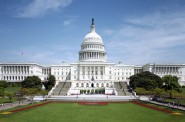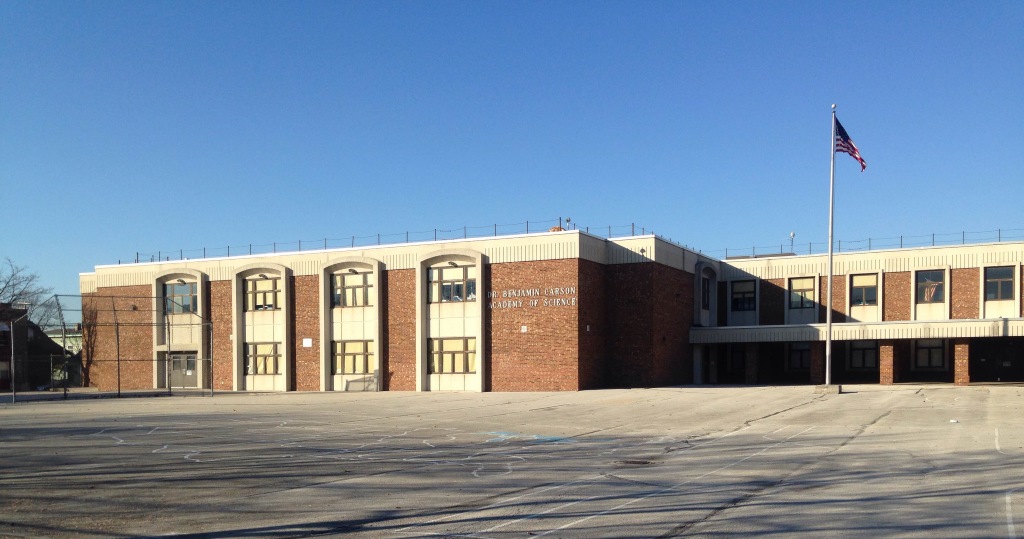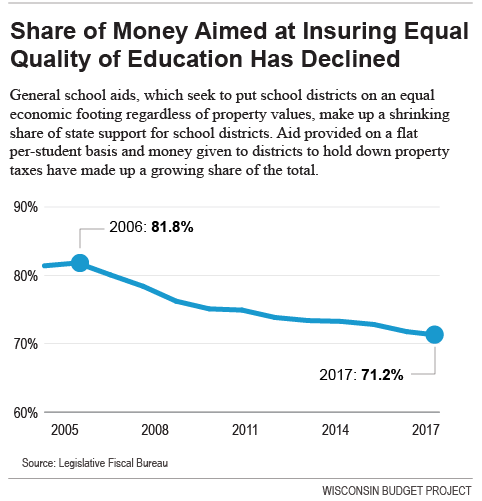The Decline in Equal Education Opportunity
Percent of state education dollars to poorer school districts has steadily declined since 2006.
Wisconsin is committing a shrinking share of its resources for education to making sure that students have access to an excellent education regardless of whether they live in a poor community or a wealthy one.
The state funds about 62 cents out of every dollar spent on public education in Wisconsin, with the remaining amount raised from the property tax in each district. The variation in property tax values means that school districts with low property values would need to use higher tax rates to raise the same amount of money for education as wealthier districts with high property values.
To help address that imbalance, the bulk of the money the state provides for K-12 education is distributed through a formula aimed at insuring that school districts with low property values are able to provide students with the same high-quality education as property-rich districts. Outside of the equalization formula, the state provides additional support for school districts that is allocated on a flat per-student basis, and also provides money to school districts to pass through to residents in the form of lowered property taxes.
The share of money that the state spends on equalizing educational opportunities for students across the state has dropped significantly over the last decade. In 2006, 82% of the money the state spend on education was aimed at insuring equal academic opportunities for students. That share will fall to 71% next year.
That decline means that a shrinking portion of the money for schools is distributed through a formula that prioritizes school districts with relatively little in the way of resources within their borders. Typically, school districts with low property values have a higher share of students and residents with low incomes than school districts with higher property values.
If the state’s commitment to equal educational opportunity had remained at the same level as in 2006, an additional $657 million would have been distributed through a formula that prioritizes poorer school districts.
Students from poor communities should be able to rely on public education as an important rung in the ladder up to the middle class. But as Wisconsin reduces its commitment to equalizing opportunities among school districts, we also reduce our commitment to making sure that students across the state can succeed academically, regardless of the wealth of their community.
Wisconsin Budget
-
Charting The Racial Disparities In State’s Prisons
 Nov 28th, 2021 by Tamarine Cornelius
Nov 28th, 2021 by Tamarine Cornelius
-
State’s $1 Billion Tax Cut Leaves Out 49% of Taxpayers
 Sep 21st, 2021 by Tamarine Cornelius
Sep 21st, 2021 by Tamarine Cornelius
-
TANF Program Serves a Fraction of Poor Families
 Aug 30th, 2021 by Jon Peacock
Aug 30th, 2021 by Jon Peacock


















